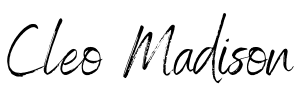Botox is a popular choice for smoothing wrinkles and fine lines, particularly for those looking for non surgical options.
Botox works by temporarily relaxing the muscles that cause wrinkles, leading to a smoother skin appearance.
This effect is achieved through small injections of a purified protein, targeting areas where wrinkles form due to repeated muscle movements like smiling or frowning.
When you consider a professional botox treatment, understanding the process can help you make an informed decision.
These treatments are widely used to address common concerns such as crow’s feet and forehead lines.
Professionals often customize the amount and placement of Botox based on individual needs, guaranteeing that your results are both natural-looking and effective.
Injections are quick, typically requiring little downtime, making them appealing for those with busy schedules.
For more information about treatment options, there are resources available that can guide you through the process.
Understanding Botox and Its Mechanism of Action
Botox is a popular choice for those looking to reduce facial wrinkles and fine lines. It works by disrupting nerve signals to specific muscles, leading to a smoother appearance of the skin.
What Is Botox?
Botox is a purified protein derived from the bacterium Clostridium botulinum. It is classified as a neurotoxin and has the ability to paralyze muscles temporarily.
This property was initially used to treat medical conditions such as muscle spasms before it became a cosmetic treatment.
Botox is widely used in aesthetic procedures to target facial wrinkles and lines, especially around the eyes and forehead. It is administered through injections, allowing precise application to specific muscles.
Besides its well-known cosmetic benefits, Botox is also explored for its potential in managing conditions that involve involuntary muscle contractions, such as excessive palm sweating, where it can significantly improve daily comfort and quality of life.
The effects are temporary, typically lasting three to six months, and the procedure involves minimal discomfort with a rapid recovery time, making it a preferred option for many.
Neuromuscular Blocking Effects
The way Botox works involves blocking signals from your nerves to your muscles. It does this by preventing the release of a neurotransmitter called acetylcholine.
Without this chemical, muscles cannot contract, making them relaxed.
This mechanism is what makes Botox effective in reducing the appearance of wrinkles. By keeping certain facial muscles from contracting, the skin above them becomes less creased and more even.
This action gives a smoother look to areas prone to dynamic wrinkles, which appear with facial expressions.
Botox as a Cosmetic Treatment
As a cosmetic treatment, Botox is commonly used to target areas with dynamic wrinkles, such as forehead lines, crow’s feet, and frown lines.
When injected, it helps reduce the movement of these muscles, leading to a more youthful appearance.
The procedure is quick, often taking just a few minutes, with minimal downtime. Some may experience mild discomfort or temporary side effects, but these typically resolve quickly.
It is important to consult with a qualified professional to discuss concerns and desired outcomes before receiving treatment.
Clinical Applications and Aesthetic Improvements
Botox has a significant role in cosmetic medicine, especially in reducing facial wrinkles. It’s applied in various facial areas, requiring a precise procedure and careful aftercare.
The effects of Botox can vary in duration, depending on numerous factors.
Treatment Areas for Wrinkles and Fine Lines
Botox is commonly used to treat forehead lines, crow’s feet, and frown lines between the eyebrows. These are often the first areas that show signs of aging due to muscle movement.
In addition to smoothing wrinkles, it can also be applied to the lower face for contouring and facial asymmetry.
The use of Botox extends beyond facial wrinkles. It can help reduce neck lines and even improve a gummy smile’s appearance.
Procedure and Aftercare
The Botox injection process is straightforward but should always be conducted by a trained professional.
Small amounts of the toxin are injected into specific muscles, causing them to relax and soften the appearance of wrinkles.
The procedure typically takes about 10-15 minutes. After the injection, avoiding rubbing the area, exercising vigorously, or lying down for at least four hours is important.
Some redness and swelling can occur but usually resolves quickly.
Longevity of Botox Effects
The effects of Botox can last anywhere from three to six months. The longevity depends on factors like the individual’s metabolism and the treated area.
For example, muscles in high-movement areas might regain activity sooner than others. As the effects of Botox wear off, muscle action returns gradually, and the wrinkles and lines may start to reappear.
Regular follow-up treatments can help maintain the smoothed appearance, and some people might notice that the lines become less pronounced over time due to reduced muscle activity.
Conclusion
Botox works by temporarily relaxing muscles to reduce the appearance of wrinkles and fine lines. It targets areas like frown lines, crow’s feet, and forehead wrinkles.
This non-surgical treatment can help you achieve a smoother, more youthful appearance.
Regular treatments are necessary to maintain the effects.
You should discuss the procedure with a qualified professional to ensure it’s right for you. Always use trusted clinics for Botox treatments to prioritize safety and effectiveness.
